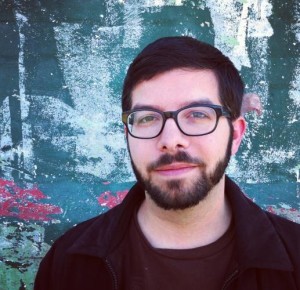 D. Edward Davis is interested in creating sonic situations that invite attentive listening. Instead of music that takes the listener on a ‘journey’ over the duration of the piece, Davis creates a ‘space’ for aural exploration, drawing the listener into the subtle nuances of the sound. The music is thus an opportunity for mental engagement, a way to experience what artist Robert Irwin calls “perceiving yourself perceiving.” The desire to achieve the conditions necessary for optimal focus on sound itself drives many of the compositional decisions his my work. Davis prefers music that is simple on its surface level — with a minimum of ornamentation — as well as on its deeper structural levels. As a result, his forms are usually straightforward, often “one idea” pieces where unity and gradual change take precedence over contrast and variety. When presented with reduced parameters, the listener is encouraged (or perhaps forced) to retrain or “re-scale” his or her attention to the micro-changes of the music instead of the macro-changes. Finer distinctions — of timbre, of tuning, of variations in attack or duration — become clearer at this attention-scale; these distinctions are blurred or even lost entirely in complex and dense music marked by constant rupture. Davis’s approach to listening is constantly informed by his interest in natural processes, as well as by his personal experiences appreciating the sounds of the outdoors. He seeks a musical language that functions in much the same way, one that maintains a balance between predictability and unpredictability that renders it always surprising but never dramatic. He is a Master of Music (Composition) degree from Brooklyn College and a Bachelor of Music (Composition) degree from Northwestern University. He is a James B. Duke Fellow at Duke University (2011-2017), Recipient of Summer Research Fellowship from the Duke University Graduate School. Summer 2013, Recipient of Summer Study in the Arts Grant from the Office of the Vice Provost for the Arts at Duke University, Summer 2012, Composer-in-Residence for the Perlman Music Program. 2009-Present, recipient of the John Cage Award for Compositional Excellence from Brooklyn College Conservatory of Music upon graduation, May 2006.
D. Edward Davis is interested in creating sonic situations that invite attentive listening. Instead of music that takes the listener on a ‘journey’ over the duration of the piece, Davis creates a ‘space’ for aural exploration, drawing the listener into the subtle nuances of the sound. The music is thus an opportunity for mental engagement, a way to experience what artist Robert Irwin calls “perceiving yourself perceiving.” The desire to achieve the conditions necessary for optimal focus on sound itself drives many of the compositional decisions his my work. Davis prefers music that is simple on its surface level — with a minimum of ornamentation — as well as on its deeper structural levels. As a result, his forms are usually straightforward, often “one idea” pieces where unity and gradual change take precedence over contrast and variety. When presented with reduced parameters, the listener is encouraged (or perhaps forced) to retrain or “re-scale” his or her attention to the micro-changes of the music instead of the macro-changes. Finer distinctions — of timbre, of tuning, of variations in attack or duration — become clearer at this attention-scale; these distinctions are blurred or even lost entirely in complex and dense music marked by constant rupture. Davis’s approach to listening is constantly informed by his interest in natural processes, as well as by his personal experiences appreciating the sounds of the outdoors. He seeks a musical language that functions in much the same way, one that maintains a balance between predictability and unpredictability that renders it always surprising but never dramatic. He is a Master of Music (Composition) degree from Brooklyn College and a Bachelor of Music (Composition) degree from Northwestern University. He is a James B. Duke Fellow at Duke University (2011-2017), Recipient of Summer Research Fellowship from the Duke University Graduate School. Summer 2013, Recipient of Summer Study in the Arts Grant from the Office of the Vice Provost for the Arts at Duke University, Summer 2012, Composer-in-Residence for the Perlman Music Program. 2009-Present, recipient of the John Cage Award for Compositional Excellence from Brooklyn College Conservatory of Music upon graduation, May 2006.
Valdez to Long Beach (2013) is an interactive installation that commemorates Exxon Valdez disaster of March 1989. The supertanker was en route from Valdez, Alaska to Long Beach, California, but it ran aground on a reef in Prince William Sound and spilled 11 million gallons of crude oil into the water. The audience is invited to sonically “complete” the ship’s journey between these two locations. Two radio transmitters on opposite sides of a space transmit the distress call of Joseph Hazelwood, the captain of the Exxon Valdez, as he radios the Valdez Traffic Center to report that his ship is leaking oil, along with field recordings of natural sites near Resurrection Bay, Alaska and industrial sites near Los Angeles, California made by the composer in the summer of 2013. Small battery-powered radios (boomboxes) function as a metaphorical ‘fleet of ships’ which continuously play the radio-signals while audience members move them from the range of one transmitter to the other, listening as the sound shifts from Alaskan soundscapes to Californian soundscapes and back again. A meditation on sound — both human and natural — the work also serves to draw attention to the process of transporting oil, which still connects Long Beach to Alaska 25 years after the Exxon Valdez.